2.8 Geoms
The geom_point() geom gives a familiar scatterplot.
Other geoms include:
geom_smooth()which fits a smooth line to the data- check
helpto seegeom_smooth’s arguments likemethod,seorspan.
- check
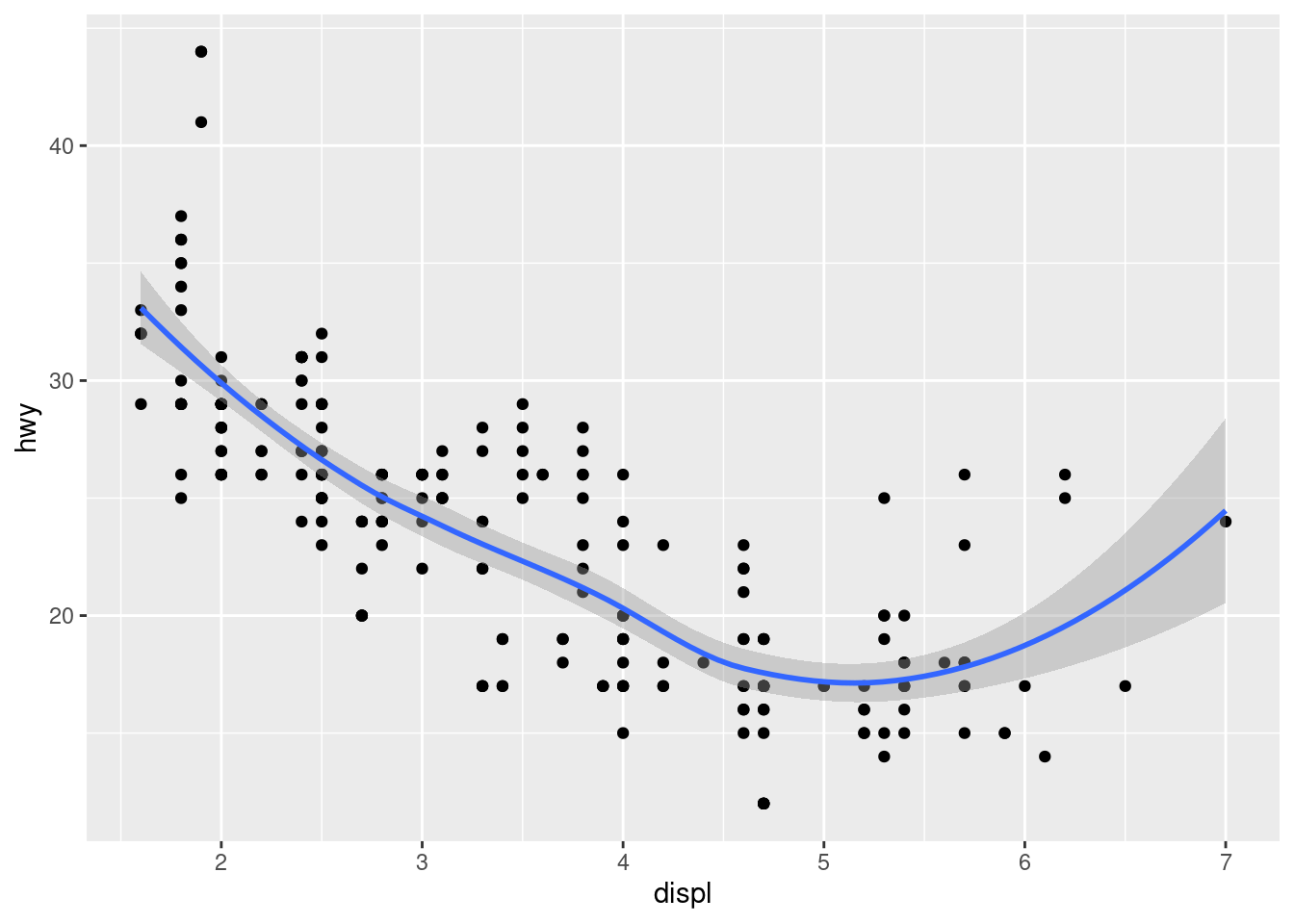
geom_boxplot()which generates a box-and-whisker plot- check
helpto seegeom_boxplot’s arguments likeoutlierarguments, andcoefwhich adjusts the whisker length.
- check
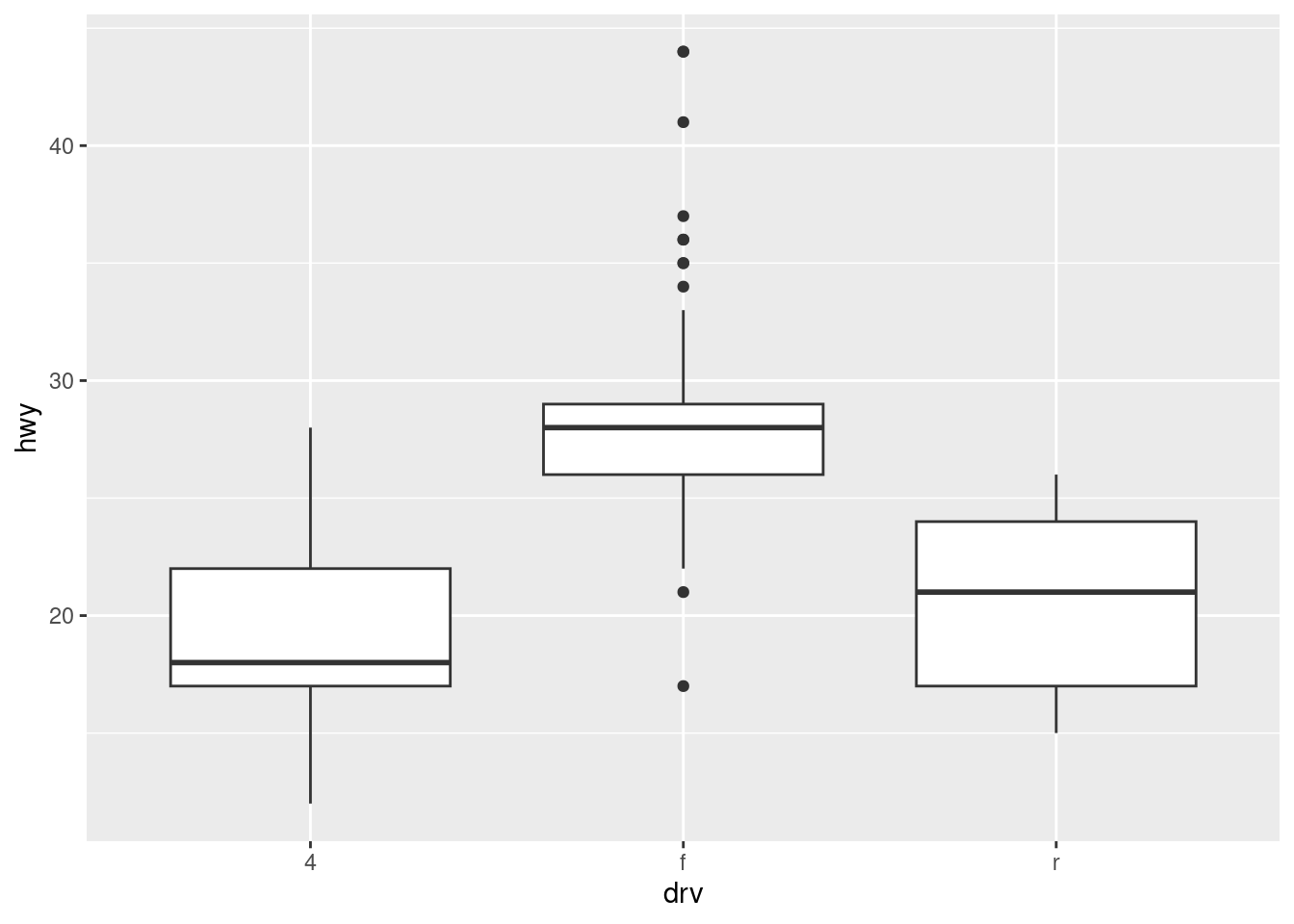
- consider boxplot variants like
geom_jitterandgeom_violin

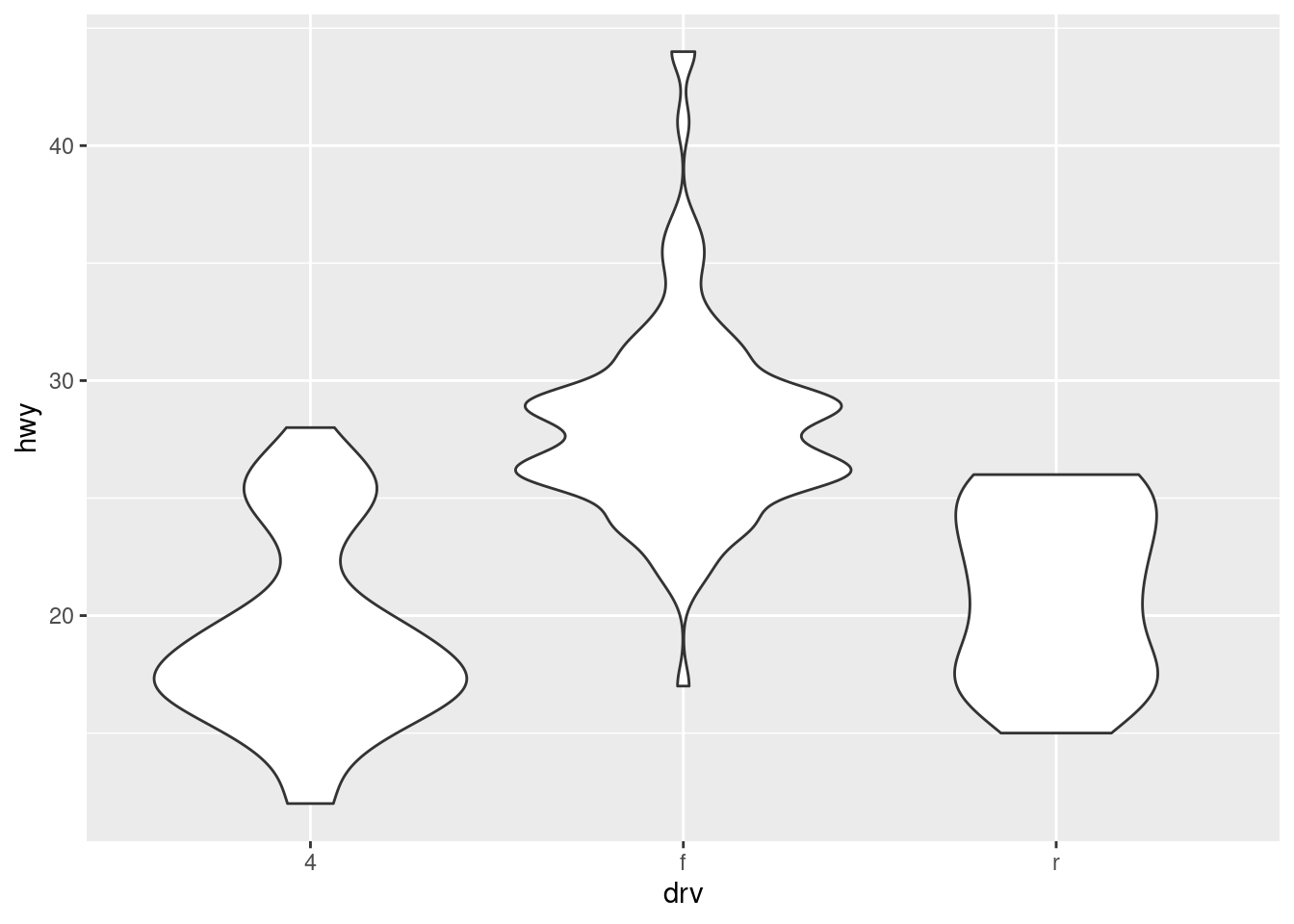
geom_histogramwhich generates a histogram andgeom_freqpolywhich generates a frequency polygoncheck
helpto seegeom_histogram’s arguments likepositionandbinwidth.
## `stat_bin()` using `bins = 30`. Pick better value with `binwidth`.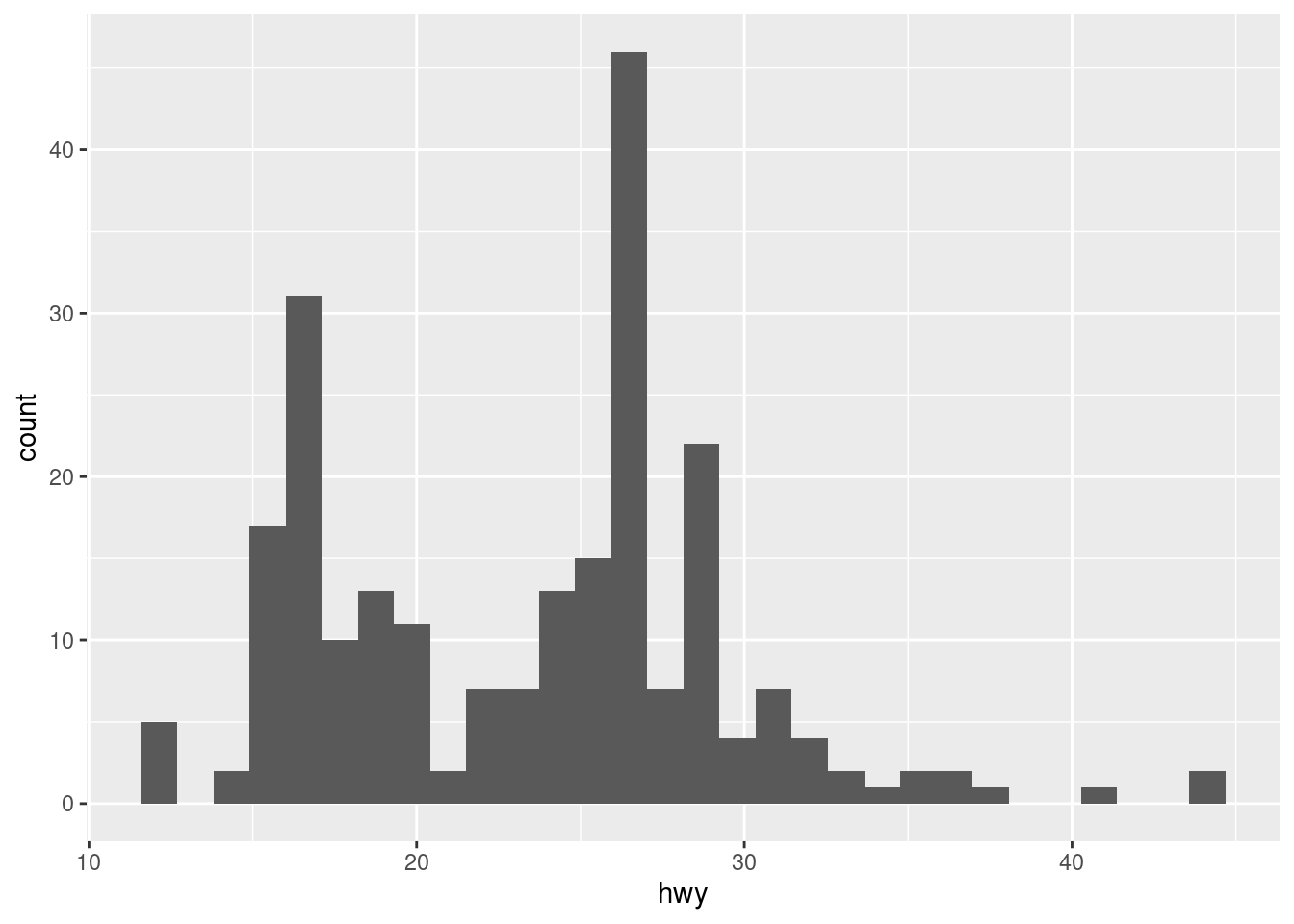
## `stat_bin()` using `bins = 30`. Pick better value with `binwidth`.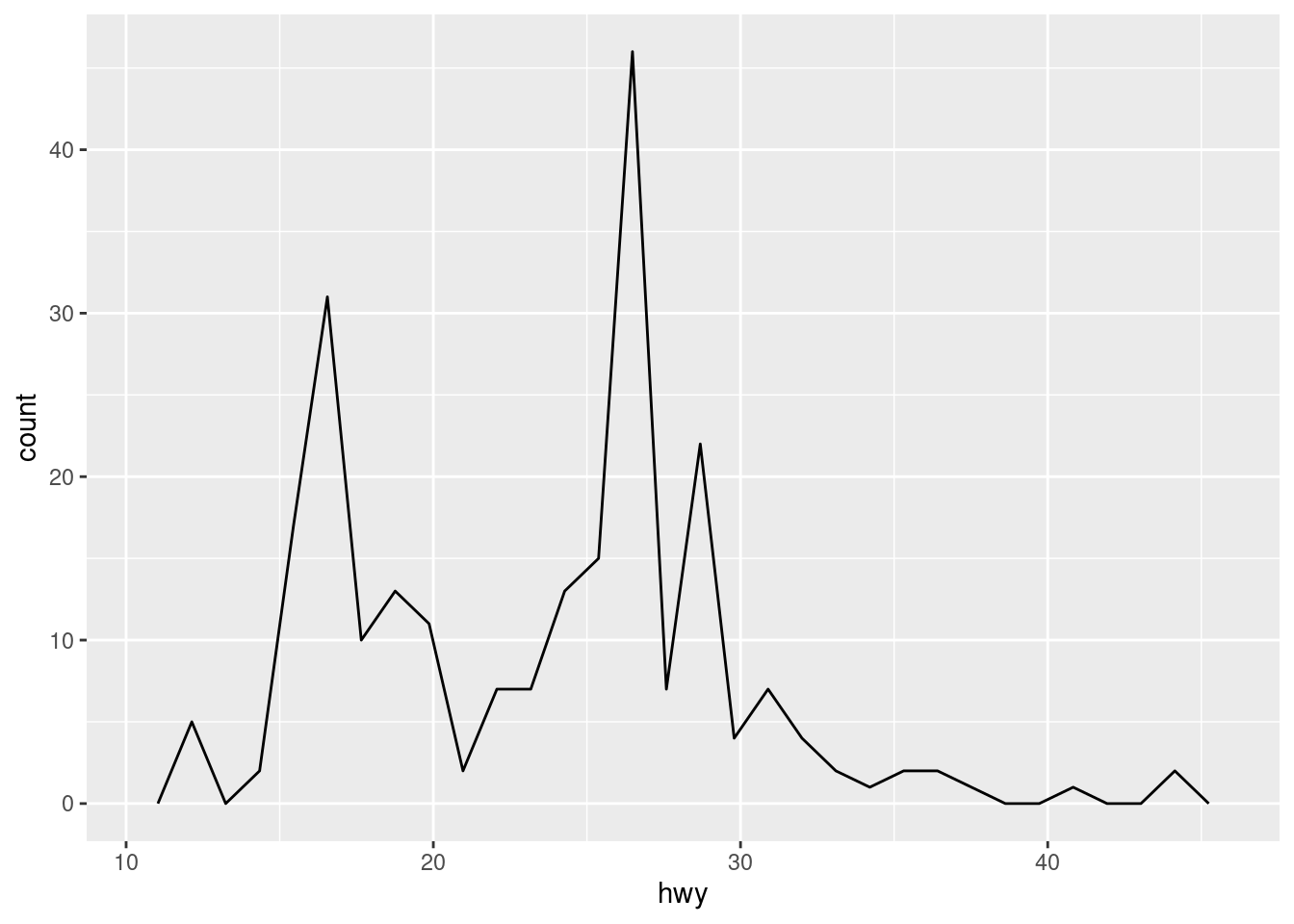
geom_barwhich generates a bar chartcheck
helpto seegeom_bar’s arguments likepositionandwidth
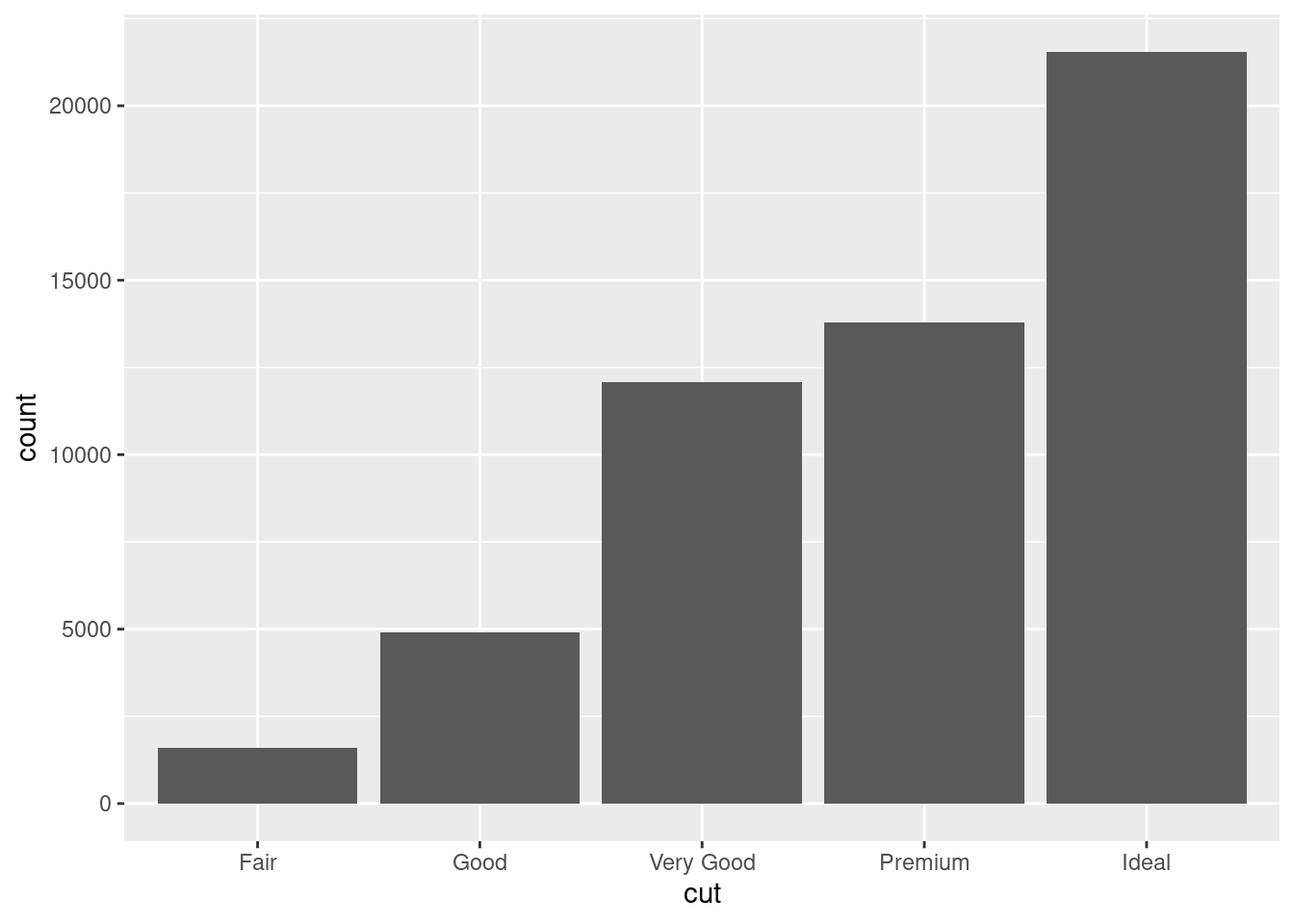
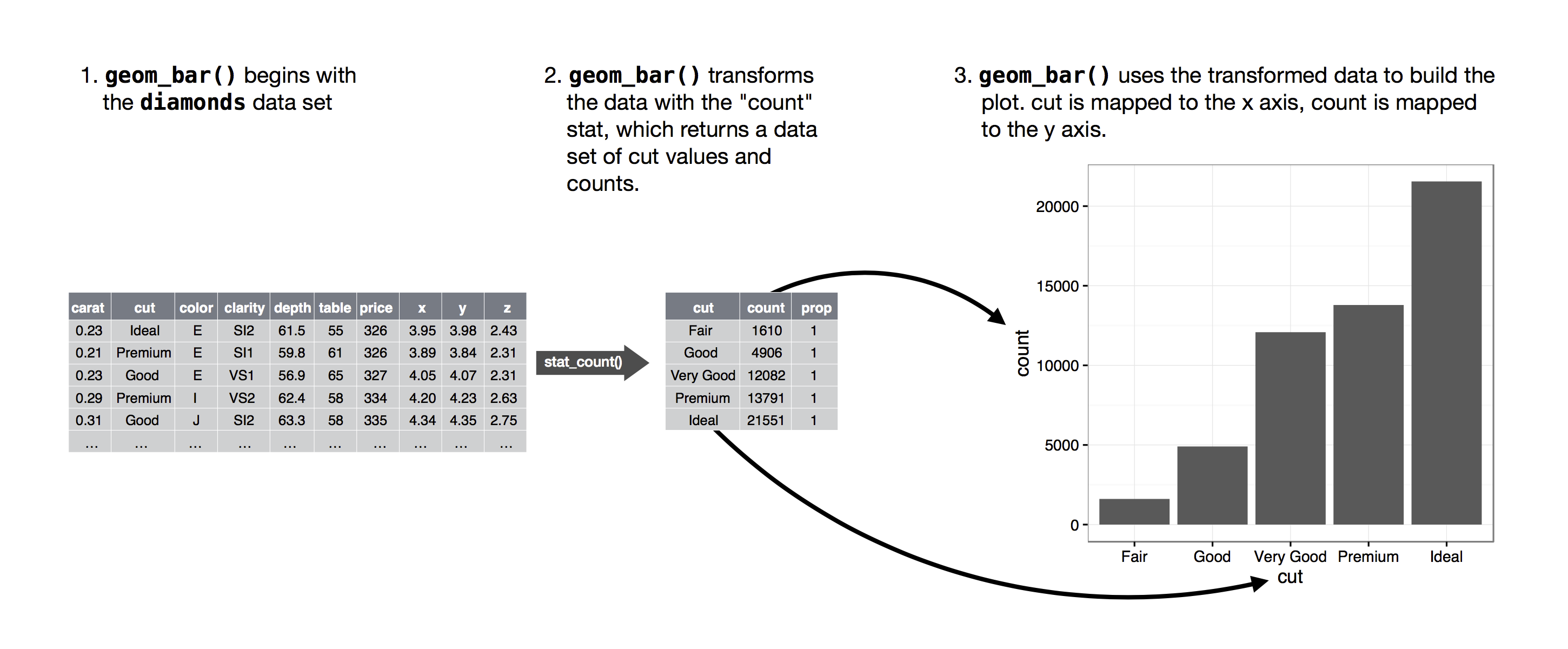
This graph below uses displ for y in the aesthetic and uses the stat of identity so that it sums the total displacement for each manufacturer.

This plot now shows the total displacement.
## # A tibble: 15 × 2
## manufacturer `sum(displ)`
## <chr> <dbl>
## 1 audi 45.8
## 2 chevrolet 96.2
## 3 dodge 162
## 4 ford 113.
## 5 honda 15.4
## 6 hyundai 34
## 7 jeep 36.6
## 8 land rover 17.2
## 9 lincoln 16.2
## 10 mercury 17.6
## 11 nissan 42.5
## 12 pontiac 19.8
## 13 subaru 34.4
## 14 toyota 100.
## 15 volkswagen 60.9geom_lineandgeom_pathwhich generates a line chart or path chart (useful for time series data)- check
helpto seegeom_line’s arguments likelineendandarrow
- check
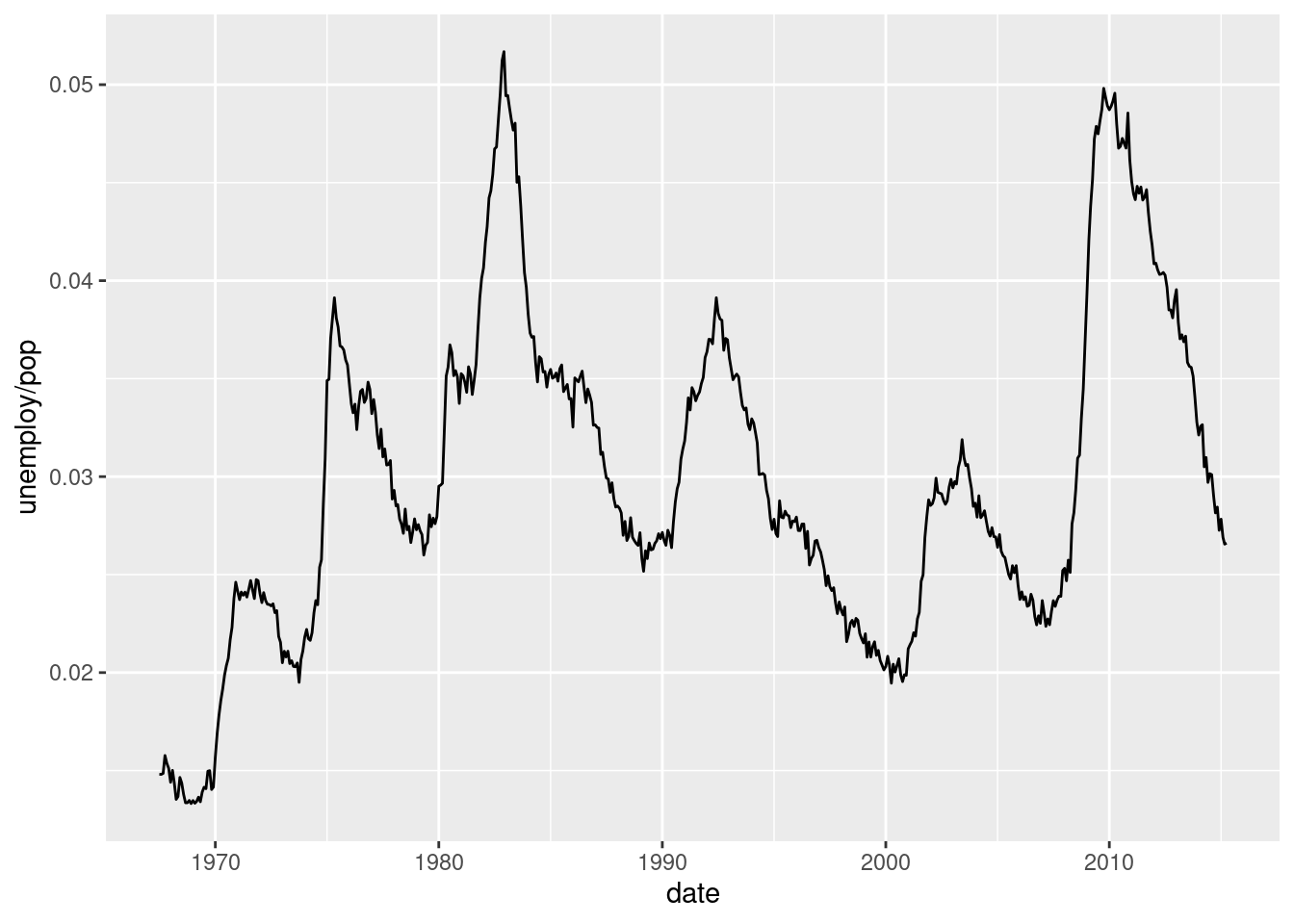
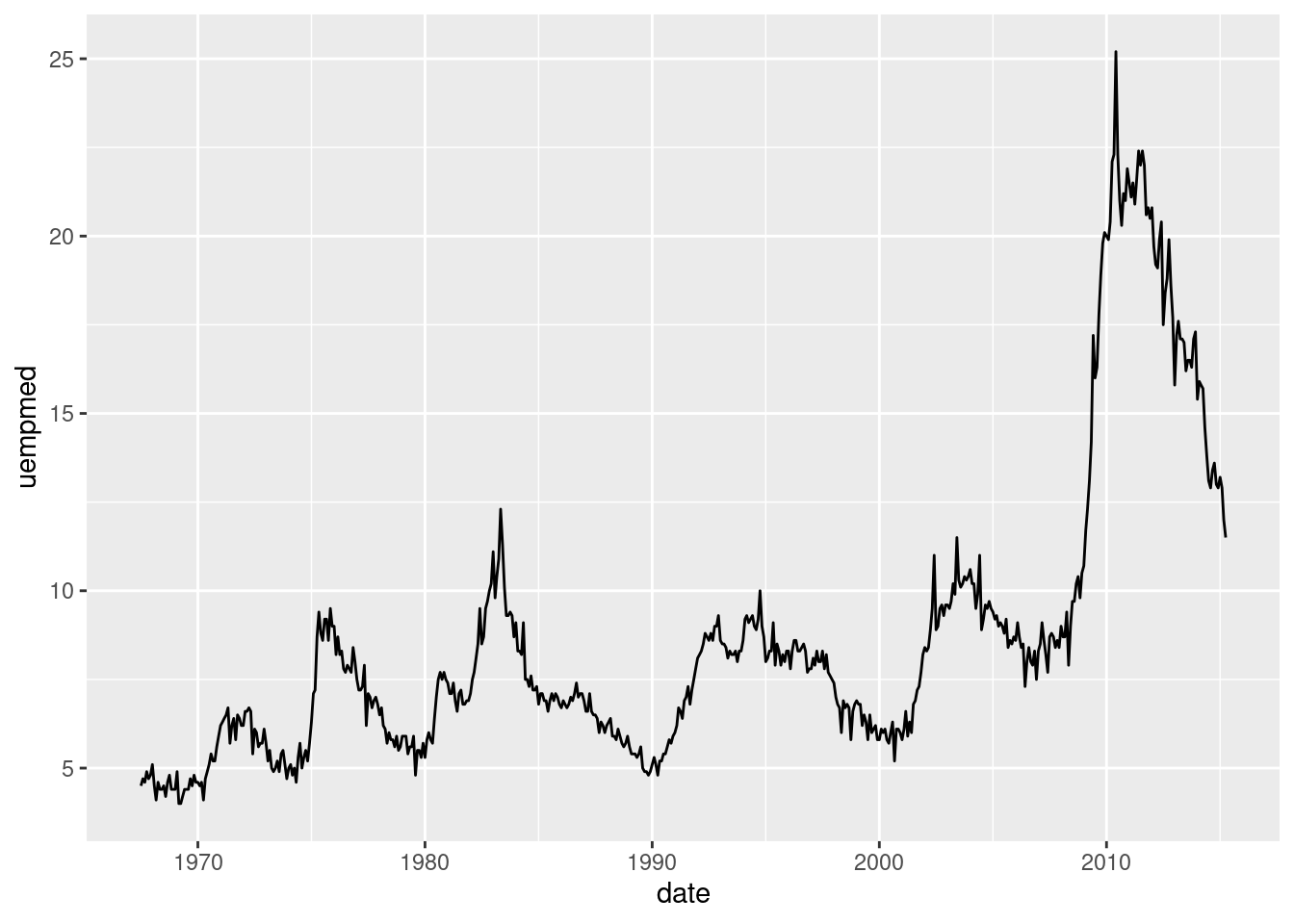
- To investigate these plots further, we can draw them on the same plot.
year <- function(x) as.POSIXlt(x)$year + 1900
ggplot(economics, aes(unemploy / pop, uempmed)) +
geom_path(color = "grey50") +
geom_point(aes(color = year(date)))